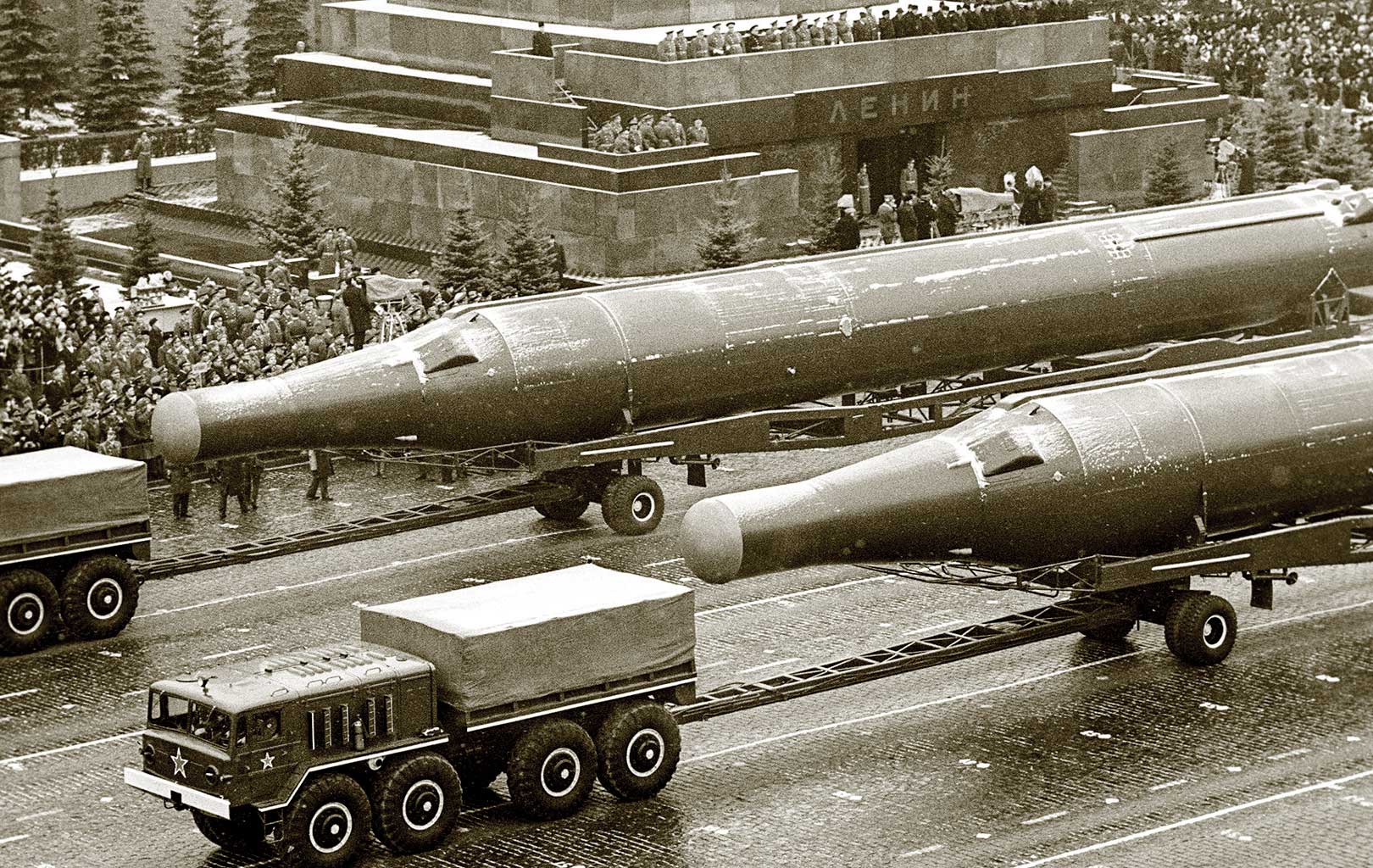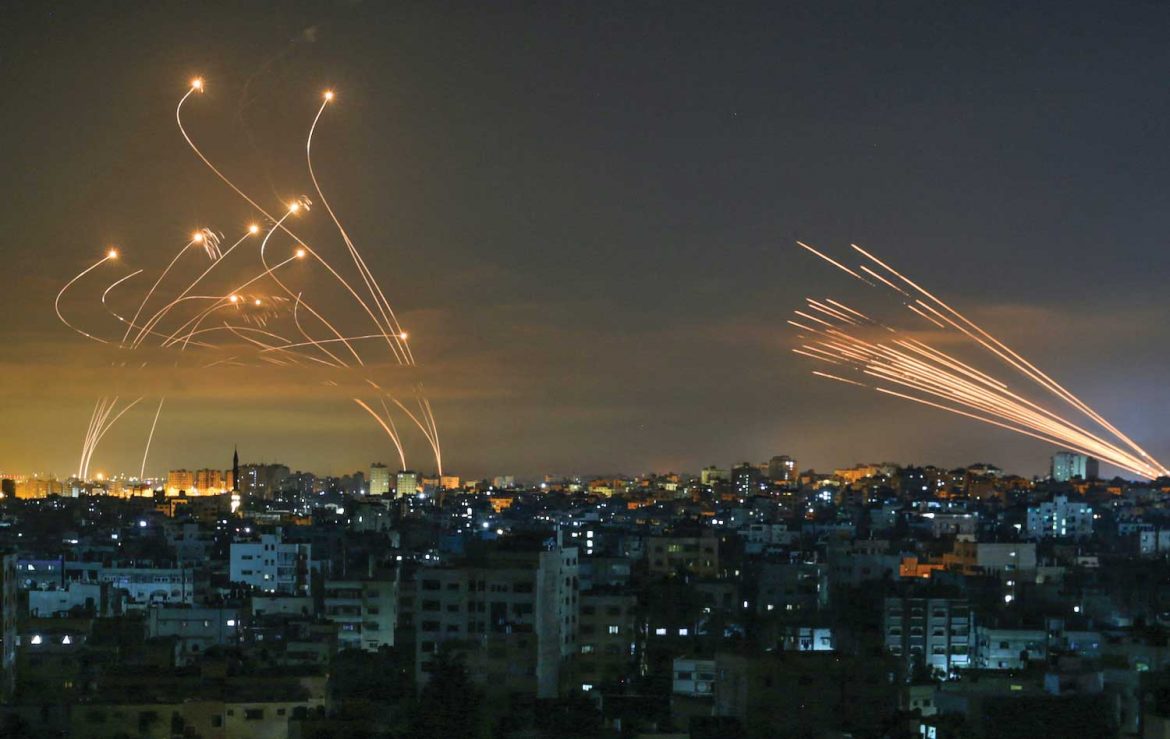Military industries and strategies witness continuous developments globally, with the aim of achieving military supremacy on the one hand, and of providing the highest possible degree of protection against rival enemies on the other. One of the important areas witnessing intensive competition between regional and international powers in this regard, is missile systems and defense systems designed to confront them, which in turn has witnessed significant developments recently.
These developments are not only at the level of industries and technologies used, but also at the level of adopted strategies, as missile systems have become the main weapon in contemporary wars due to their pivotal role in destroying command and control centers and vital targets remotely. This prepares the ground and facilitates the task of the rest of the forces in achieving their objectives. Therefore, many countries seek to develop air and missile defense systems to counter these missile attacks.
Among the important strategies that have emerged in this field is what is known as the “Missile Dumping” strategy, developed by some militarily advanced countries as well as less developed ones. Even some non-state armed groups and factions used this strategy to achieve military successes; using primitive techniques and missiles, but it proved to be effective at times. This study seeks to define “Missile Dumping” strategy, its objectives and how it works. I will also point out the evolution of using this strategy in the context of developing missile defense systems, and refer to some of the forces applying it the Middle East; particularly Iran and its affiliated armed groups.
What is the “Missile Dumping” strategy and its objectives:
The idea of missile dumping depends mainly on the launch of a large number of missiles simultaneously, in what has become known as “missile salvos”, to dump the air defense and defensive missiles the enemy has, so that these systems cannot intercept all the attacking missiles. This opens a significant hole in the enemy defenses and facilities hitting the vital targets intended to be destroyed.
The Missile Dumping strategy is used mostly against an enemy who has sophisticated anti-missile systems, so that these systems can’t destroy all the attacking missiles simultaneously, even if the target hit rate is 100% due to the intensity of the fire and the insufficient number of anti-missiles to intercept all these attacking missiles simultaneously. This strategy is also used by some countries or armed groups to make sure that a target is hit if they do not possess missiles with sufficient accuracy. They launch a large number of missiles, hoping that one of them will be able to hit the desired target.
In addition, the Missile Dumping strategy, aims to mislead the enemy’s air defense and missile systems, especially if there were many missile launchers with variety of ranges, and deployed on large areas. In some cases, these systems themselves are targeted by missile attacks, in order to destroy or neutralize them. Then, it will be easier to hit critical and sensitive facilities. 
Missile defense systems VS “Missile Dumping” strategy:
Since launching the first ballistic missile by Nazi Germany in 1943 (during World War II) which heavily targeted Britain and the rest of the allies, the world has witnessed major developments at the level of military missile systems production, as well as anti-missile systems. At first, competition was confined to the United States and the former Soviet Union, as they have developed abilities significantly in producing intercontinental ballistic missile. These missiles enabled man to invade the space, and launch the Star War. They have also developed sophisticated missile defense systems, used by most armies of the world today, before other countries began to join the race recently.
The world is led today by five major countries in producing missile defense systems. They are; the United States of America, Russia, China, Israel and India. Today, the United States has many developed defense systems, notably:
United States of America
1 Ground defense system GBMD that intercepts long-range ballistic missiles that could be launched from North Korea, Iran, Russia or any other country. This system is designed to protect the US territory only.
2 The Aegis naval missile defense system, which includes a group of missile launchers and radar devices, installed on ships and naval destroyers. This system targets short and medium-range “tactical” missiles, and it benefits from the abilities of the United States allies in Asia, Europe and NATO countries .
3 “Patriot PAC-3”, a missile defense system, used widely in NATO countries and deployed currently in many other Washington allies, such as: Germany, Spain, Greece, Romania, Israel, Japan, South Koria, Taiwan, Saudi Arabia, UAE, Kuwait and the other countries. This system is designed to intercept short and medium range missiles.
4 THAAD defense system, It is designed to intercept short and medium range missiles at altitudes of up to 200 km outside the atmosphere.
Russia
1 The S-500 air and missile defense system. It is the first system capable of destroying satellites and hypersonic missiles, and is able to track enemy aircraft at a distance of up to 800 km and hit targets with missiles at a distance of 600 km.
2 “S-400” System, which is equivalent to the US, THAAD system. It uses a wide range of missiles, making it a multi-role system, and it is able to destroy the stealth aircraft at a distance. It can launch 160 missiles and the destroy up to 80 targets simultaneously.
3 “S-300” System; the equivalent to USA Patriot system. It is one of the most used systems in the world, and more efficient in intercepting missiles at low altitude, up to 60 kilometers of, and a range up to four kilometers. Every battalion has long-range radar system to detect hostile targets, and a command vehicle for data analysis, in addition to 6 vehicles; working as platforms for launching missiles (each vehicle carries six missiles) and a short-range radar for tracking targets and guiding missiles toward them. This system can handle 24 aircraft or 16 ballistic missiles up to 250 kilometers simultaneously.
In addition to the United States and Russia, which are at the fore in the global competition in the field of missile defense systems, there are other countries that have witnessed significant developments in this field, such as:
China
Has succeeded in developing a long-range system, HQ-9B, a developed version of the Russian S-300 or IBM-2, manufactured early 1990s. This system can destroy air targets over 250 km, its missiles reach the speeds of 402 Mach and its guidance systems guarantee them accuracy.
India
India, as well, has two defense systems; the “Prithvi” air defense system PAD, that is designed to intercept missiles at high altitudes from 50 to 80 km. The AAD air defense system is designed to intercept missiles at low altitudes, until 30 km at most. The two systems are less developed than their Russian and Chinese counterparts.
Israel
Israel has also a great experience in developing air and missile defense systems. Among the most significant systems it has developed, are:
1 Iron Dome system: It is a tactical air defense system, designed by Israel to intercept short-range missiles and became famous during the recent war with Hamas for intercepting a number of rockets launched from the Gaza Strip. This prompted several purchase requestes. In February 2020, the Israeli Ministry of Defense announced that it had conducted a successful test of a modern version of the Iron Dome system.
2 David’s Sling system: It is an air defense system designed to intercept medium-range missiles and was developed in cooperation with the United States of America. It can counter missiles with a range of 100 to 200 km, such as those in the arsenal of “Hezbollah”, aircraft or cruise missiles at low altitudes. This system does not have the advantage of multi-tasking and mobility that the Russian systems possess, but it has another important advantage; its use of radar and electronic-optical guidance systems, that ensures desgnating and tracking the target very effectively. It is also characterized by its high-precision missiles.
3 “Arrow” system: It intercepts long-range ballistic missiles, and has been designed in cooperation with the United States. “Arrow-3” is its latest version, whose missiles up to 2,400 km.
The question here is: Are these defense systems capable of dealing effectively with the “Missile Dumping” strategy?
Facts and events indicate that it is impossible to establish a shield able to protect a country completely from missile attacks, for a number of reasons, including:
1 Most of the existing air defense systems can deal with a number of missiles that do not exceed dozens at most, which means that launching a large number of missiles is beyond the ability of these systems, and the success of this strategy in hitting their targets is guaranteed, because some of them will not be intercepted.
2 The development of missile and air defense systems pushes competing countries to develop their missile capabilities and intensify their missile attacks to compensate for the missiles intercepted by the defense systems, so that they can eventually penetrate the protective wall these defense systems build.
3 The third reason is related to the cost aspect, as some countries or armed groups usually resort to using primitive or low-cost local missiles, while using advanced missile defense systems to intercept them is very expensive. This means a drain on the financial and economic capabilities of the party using these systems. For example, some estimates indicate that the cost of short-range missiles, launched by Hamas, ranges between 300 and 500 and 800 dollars for each missile, while the Iron Dome intercepting missiles cost ranges between 50 to 1oo thousand dollars. The same applies to the American “Patriot” missiles, which cost about 3 million dollars each.

The “Missile Dumping” strategy in the Iranian doctrine:
The “Missile Dumping” strategy represents one of the threats that Iran looms in the face of its enemies, especially the United States and Israel. This is not new, as in October 2007, General Mahmoud Chaharbagi, commander of the missile group within the Revolutionary Guards, said: “Iran is capable of launching 11,000 missiles at enemy bases within the first minute of being attacked”.
Although Iran’s missile capabilities are not significantly advanced, Tehran depends on quantum strategy; through the production and storage of an arsenal of short, medium and long-range missiles, some up to about two thousand kilometers. These missiles are to be used, if necessary, to target enemy facilities with large numbers. It will be difficult to intercept all of them by missile and air defense systems. Also, Iran has started recently to work on raising the efficiency and accuracy of these missiles in its arsenal.
As part of its efforts to expand the scope of the strategy, Tehran resorted to provide affiliated regional allies with large numbers of missiles. Militias such as “Hezbollah”, “ Houthis”, “Hamas”, and perhaps some Iraqi Shiite militias will support Tehran in implementing the “Missile Dumping” strategy, when needed. Therefore, there are multiple missile launchers; covering the largest possible area. These affiliated groups are used in carrying out military attacks against those whom Iran considers its enemy, which has been evident on many conflicts in the region during the past few years.
The Iron Dome system against the rockets of the Palestinian factions :
The Ltd governmental Israeli company, Rafael, succeeded in developing an advanced defense system; named “The Iron Dome”, in 2010. It can intercept short-rage Katyusha rockets, launched by Hezbollah and the Palestinian factions. This system was deployed in the summer of 2011 near Gaza Strip. Other batteries were deployed near the cities of Ashkelon and Ashdod, south “Tel Aviv” and near the city of “Netivot”; 20 kilometers from the Gaza border.
The Iron Dome tracks short-range projectiles by radar, and then the control unit analyzes the data and predicts the possible fall area. If the analysis results indicated that the rocket would hit a target or a populated area, the control system sends a command signal to the launcher to launch an intercepting missile. Each battery is equipped with detection and tracking radar, launch control system and 3 launchers, each carrying 20 missiles.
Although Israeli officials confirmed that The Iron Dome system is effective at a rate between 90 to 95%, the recent Gaza war (May 2021) proved the inability of this system to confront the “Missile Dumping” strategy to a large extent. Hamas and other Palestinian factions adopted a double tactic in its rocket attacks to put pressure on The Iron Dome system. The first is to launch a large number of rockets simultaneously to dump the Iron Dome system, so that it cannot intercept all the rockets at the same time. The second is an attempt to expand the diameter of the rocket attacks in a way that forces Israel to spread its units over larger areas, in order to weaken the focus of The Iron Dome system.
This has been a successful strategy in penetrating the Israeli Iron Dome system and hitting many targets and Israeli cities. Hamas and Palestinian factions lunched about 3,000 rockets within 8 days from the Gaza Strip into Israel, killing and wounding dozens of people. These rockets, also, reached remote unprecedented targets, which raised a debate within Israel about the effectiveness of the system, especially in light of the high cost incurred by Israel to counter low-cost, primitive rockets launched by Hamas.
Conclusion:
In its assessment of the failure of the of the Israeli Iron Dome system against the rockets of Palestinian factions during the recent Gaza war, “National Interest” magazine concluded that there is no missile defense system, no matter how advanced, has full immunity against intensified rocket attacks. This conclusion confirms that the “Missile Dumping” is an effective strategy, if implemented by states or armed groups, whenever they have a large arsenal of missiles and rockets, regardless how developed they are. This may encourage more states and armed groups to use this strategy in the future, in order to apply pressure on the enemy and confuse its strategic defenses. ●













